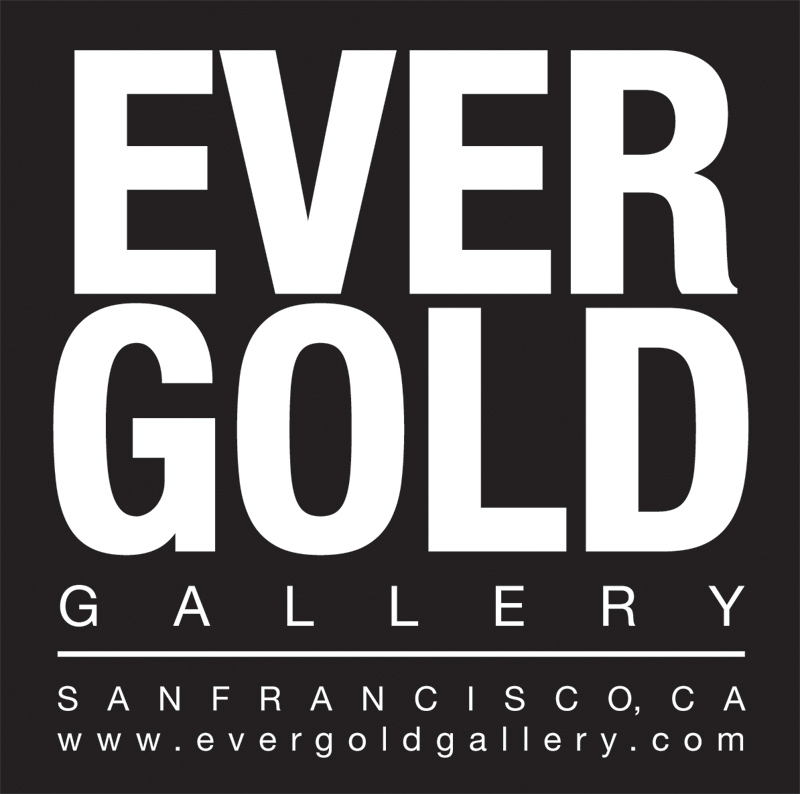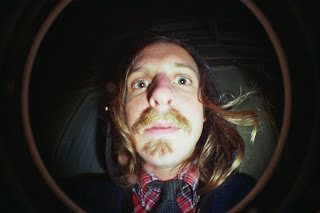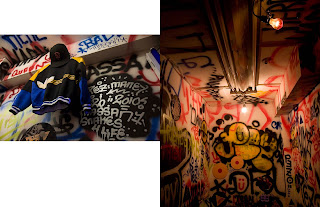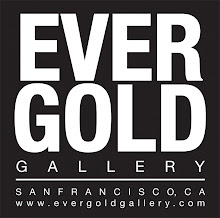34. San Francisco, CA. Bartender, artist/maker.
Describe a day in the life of David M. Grant.
Depends on the day really. I bartend three nights a week at Vesuvio so on those days it's like anyone else's work day except I eat breakfast at 5pm and dinner at 4am and go to bed at sunrise. Until a few months ago I was doing course work for my MFA at SFAI and being a teaching assistant. Now that that's all done I have 4 days a week to think about how the world will end.
How did you get here from where you are?
I'm always arriving.
What got you inspired to start making art?
Well I think most little kids are inspired to make things and be creative naturally and then through socialization they are encouraged to do more pragmatic things like play sports and go to business school. I didn't really have that problem. My parents let me do what I was inclined to do. As a kid it was normal to make comics and draw dungeons and dragons maps and then as a teenager I became aware of art making in the academic and institutional sense and of course took studio and art history classes and visited museums. I went to a pretty progressive art oriented high school called "Urban" here in San Francisco and my drawing teacher would send me to the life drawing classes at SFAI that are open to the public and from there it just made logical sense that I would go to art school for college. So now I have this highly formal and theoretical art education to draw from but ultimately I try to revert to that same creative space that I had as a kid before i was aware of things like deconstructionist theory and other postmodern jargon. I think to maintain a studio practice over the long term it's got to have elements of fun and play involved or it's going to be a chore and produce really boring art.

How would you describe your art to a blind person?
That's tough because the work I do is entirely sensed optically and color and form are crucial elements to what I do. I think people working in sound or something tactile would obviously be more appropriate for someone who can't see and fortunately there are people doing that kind of work. I guess I would talk about some of the ideas that I'm concerned with in the work such as energy, environment, consumption, and geopolitics, all of which can be understood intellectually even if you don't relate to them visually. It would probably be an interesting and enlightening conversation to have.
Name some influence (Art, Film, Music…) What was the last book you read?
I tend to think that everything both art and non-art related end up being influences and they are too numerous to list but if someone with an art historical background were to look at my work I think it would be accurate for them to suggest that the San Francisco Mission School and LA Underground and Low Brow artists were influential. People like Christian Schumann, Chris Finley, Chris Johanson, Margaret Kilgallen, Claire Rojas, and Jovi Schnell. Also Sol Lewitt, Raymond Pettibon, Josef Albers, Frank Stella, Enrique Chagoya. Henry Darger, and a whole lot of comics and cartoons. Really there are too many to list. The Last Book I read was probably Haroun and the Sea of Stories by Salman Rushdie.
Describe your working method. What kinds of materials do you use and why?
Lately the surfaces i've been working with are either box panels or found paper and book covers. I had a whole bunch of old books in my studio and decided to start ripping them up and painting on the inside and back covers or on blank pages. I have an affinity for children's books and encyclopedic science illustrations so it was sort of a natural progression from owning these books that I already liked to working in them directly. It also recycles these otherwise discarded materials and turns them into something a little more special which relates to the issues of ecology, consumption, and environment that my work is concerned with. I use kolinsky sable watercolor brushes in combination with a variety of acrylics, watercolors, and gouaches. I'm a bit of a rainbow painter so I have lots and lots of different tubes and am always adding things to my studio. Most recently I discovered Holbein's acrylic gouache and would be really pleased if a box of the stuff fell off a truck in front of my house. I don't really have a standard methodology for where I get ideas, what source material to use, if any, or how things get made. I will say that works tend to fall into two categories as far as how they develop and evolve: one half of them are started with no conception of how they might resolve and the other half have some sort of pencil sketch or loose plan when they get started. I would go on to say that the first group tend to be more of a formal investigation and process oriented kind of painting and the second group are more illustrative of a general concept. The second group can at times be less exciting to work on but sometimes you just have something you want to say in a very direct way.

Please talk about the title of the show: Plastastik and also about the inspirations you had when putting together the show.
I've been interested in politics and U.S. foreign policy for a long time. There is a correspondence from Noam Chomsky on my wall from my early twenties for anyone who doesn't believe me. Around the time of 911 and the ensuing wars I became interested like a lot of people in why these things were happening and it became obvious that western global capitalism and securing remaining energy reserves in the middle east were a clear motivation for why our country does the things it does. All of this occurs to fuel a certain kind of energy and material intensive lifestyle that most of us are fully invested in. At some point it's coming to a crashing end but in the meantime our whole civilization depends almost entirely on cheap fossil fuels, primarily oil. Food production, medicines, transportation, and consumer goods all require huge amounts of oil in both it's energy and material applications to operate. The Earths population has increased from about 500 million people to about 7 billion since around the time oil was first used on an industrial scale so one might want to consider what happened when we run out of the stuff. I'm interested in how we think about our own consumption of plastic bric a brac and throw away disposable consumer goods and the contradictions inherent in our addiction to oil. Plastic, of course, in all its banal and stupid uses is the embodiment of these larger geopolitical, environmental, and social problems. Which isn't to say that plastics don't have beneficial uses and that somehow I think I'm above all of it. Quite the contrary, my work is bright, shiny, and colorful like any other commodity precisely because that's what I and other people are interested in buying. Hopefully an original art object that was made by hand has more value to society than a bag of plastic army men but it's something worth thinking about. I knew some of Chad's work were these huge plastic flotillas of bric a brac and neon lights held together by chicken wire and hot glue gun and there seemed to be some tenuous connection between the paintings of conglomerate structures I was making and the sculptures he had been doing. Independently of one another we both started thinking about the plastic trash vortex twice the size of Texas out in the Pacific Ocean and incorporating it into our work. I'm mostly dismayed at how unsurprised I was when I learned that something like that actually exists. It's like we hear stuff like that all the time now on a regular basis and it doesn't really phase us enough to change our habits. Then of course the show title is also a little nod to the concept of plasticity in painting and how that informs the way we look at and make work.

You are soon to be graduate of the SFAI Masters-programm. Any tips for the future generations on how to survive school?
I think we're going to need to focus on surviving period but then I'm a bit of a pessimist on these matters. I would say there isn't much point to it unless you're committed to either a life long art practice or a life long learning practice. I mean, some people may make money making art but there are easier ways to make money so unless making work is it's own reward for you consider going to business school and become one of these bankers and financiers that are fucking the country. I don't really think I'm the best person to give advice, I'm just making this is up as I go.
You work at the famous Vesuvio’s Café in North Beach. Any encounters you had there you would like to share with us?
Dave Foley from Kids In The Hall came in about a month ago and we hung out with him after hours and he was real funny and nice which is often the case with Canadians. That's the only encounter that I can think of that's not too personal. It is a great place to work. The best job I've ever had. It kind of makes doing anything else besides being a rock star or independently wealthy seem really really hard. Any comments on current political/global situations?
It seems like we're about due to start bombing some developing nation sometime soon. Hopefully we'll figure it out eventually.




























































